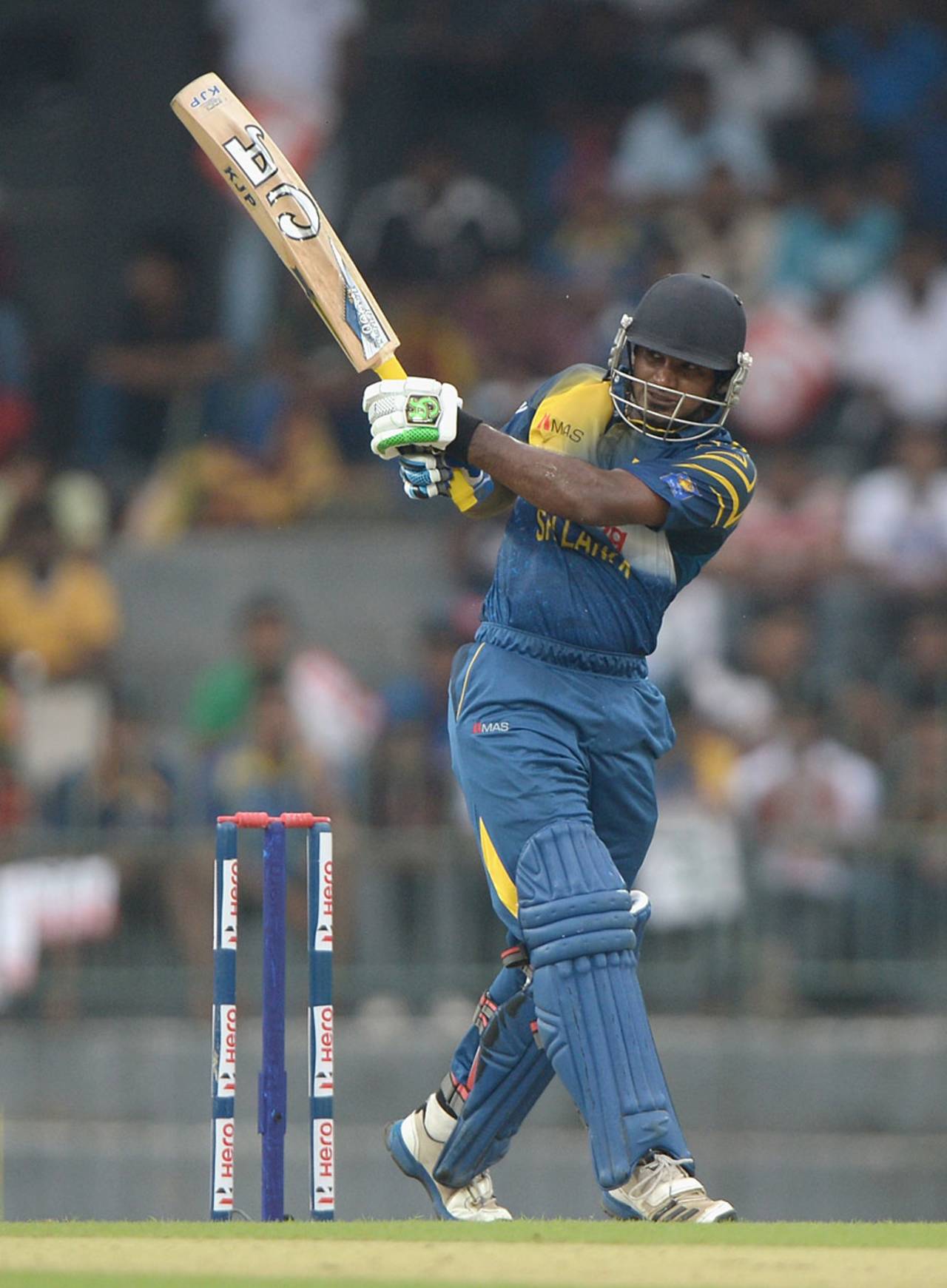A tonic for Sri Lanka's top order
Though a strong argument remains that Mahela Jayawardene and Tillakaratne Dilshan are Sri Lanka's best opening pair, a consistent Kusal Perera is vital to the batsmen maintaining their present positions
Andrew Fidel Fernando in Colombo
26-Nov-2014

Kusal Perera's 59 against England helped wash away memories of his poor form in India • Getty Images
Sri Lanka is not quite an island dream in November. Rains are nation-wide. Mosquitoes rule the gardens. Flood and landslide risk announcements invade airwaves, and drawn-out days are endured indoors, until the monsoon breaks and the cool, dry months sweep in.
Even with the climate at its worst, though, Sri Lanka's cricketers appear glad to be back. On Wednesday, they settled back into their Khettarama haunt, like a weary traveler returning to his own bed. A side that had not looked like competing in four of their five previous games rediscovered their batting mojo in almost jarring fashion. The same top order that limped around India were suddenly surging in long stretches. The brittle middle order was bustling to the finish. That Sri Lanka's commanding total was achieved without substantial contributions from Kumar Sangakkara and Angelo Mathews, the two recent pillars of the batting effort, is remarkable in itself.
Troubles at the top of the order have plagued Sri Lanka for over a year, but in only his fourth match at home since July last year, Kusal Perera played an innings that showed why the selectors had given him such a long rope. Three knocks in India read 0,4,0, before he was dropped, but on return to his hometown he was crashing balls into the Premadasa's rustic scoreboard and bludgeoning to leg in step with the papare music in the stands.
Kusal's 59 off 74 was one of his more measured ODI innings. He played himself in early on, then attacked only in bursts, but the runs were high-impact nonetheless. Alastair Cook was forced to take Ben Stokes out of the attack when Kusal clobbered him for 18 in four balls.
Tillakaratne Dilshan had been visibly out of touch when his opening partners abandoned him in India, but while Kusal monopolised England's attentions, Dilshan was taking runs on the sly at the other end. How quickly major troubles were eased by the return to familiar surroundings. The opening partnership had been the root of Sri Lanka's batting woes in India, but on Wednesday Dilshan and Kusal mounted Sri Lanka's first three-figure opening stand in 14 months.
That is not to say Sri Lanka, and Kusal, have had all their concerns disappear in one match. Kusal has always been capable of playing innings like his 59, but there are frustrating gaps between good scores in his career so far. Before this innings, he had had 12 knocks without a fifty, and four of his previous five outings had yielded single figures but he has at least begun to make his World Cup case now.
Though a strong argument remains that Mahela Jayawardene and Dilshan are Sri Lanka's best opening pair across all conditions - with a place for Kusal lower down, where he bats in domestic cricket - Angelo Mathews and the selectors will feel that Wednesday's batting order helps avoid top-loading the team's experience. A consistent Kusal is vital to the batsmen maintaining their present positions.
Kusal and Dilshan also led the charge in transforming Sri Lanka's near-farcical fielding of the past three weeks. At 38, Dilshan is still a livewire at backward point, making horizontal saves and descending on loose balls in the ring. Kusal meanwhile blazed trails in the outfield, hunting down well-struck balls that most others would have allowed to cross the ropes.
"Although we dropped two catches, we fielded very well, I thought," Mathews said after the match. "If you compare it with the India tour, there was a huge difference in this match. I'm less concerned about the two catches, because we showed a real intent and urgency in the field."
There are concessions to be applied here. Having had their preparations disrupted by the November rains, England were visibly rusty, particularly with the ball. They are also missing their two attack leaders in James Anderson and Stuart Broad, and also had Steven Finn unavailable for this match. Sri Lanka will face greater ODI challenges in the months to come - probably in this very series. Even a depleted England attack will not bowl 17 wides in every match.
But Sri Lanka have rediscovered their aggression and energy almost as suddenly as they seemed to have lost it. Following the shellacking in India, a little home comfort has got them playing fighting cricket again.
Andrew Fidel Fernando is ESPNcricinfo's Sri Lanka correspondent. @andrewffernando